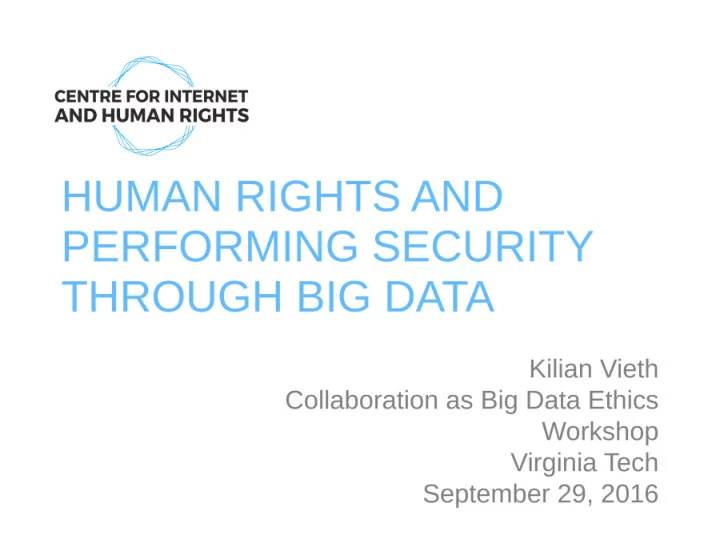

CIHR Research Areas Technology in International Relations – We study how digital technology shapes global politics and foreign policy. Norms embedded in Technology – We study how norms define technology and how technology influences social norms and values. Digital Trade and Development – We study how the Internet changes existing models of trade and development.
Why do they raise ethical concerns? 1. They keep information away from us: gatekeepers 2. They increasingly make subjective decisions 3. We often don’t know how they work
Condensed T echnology Algorithms Software IT & Computing Systems
Big Data is a question of ethics of algorithms.
What is Big Data? 1) Technology: maximizing computation power and algorithmic accuracy to gather, link, and compare large data sets 2) Analysis: drawing on large data sets to identify patterns in order to make economic, social, technical claims 3) Mythology: the belief that large data sets ofger a higher form of knowledge that can generate insights that were previously impossible (Crawford & boyd 2012)
Large data sets – the amount of data available through digitization continues to grow.
T rends in Big Data and Security Broadening of Security: Threats become risks De-difgerentiation of Security: Blurring of internal and external dimension Privatization of Security: Most data gathered by private actors
The risk-based logic of security is anticipatory.
What is Risk in Security? Risk = potential damage x probability This is a question of perspective: Everything can be a risk Not all risks are interpreted as dangers → Process of (In)Securitization (Bigo et al. 2006)
From Prevention to Preemption Big Data Risk Management: Permanent monitoring for 'social sorting' (Lyon 2003) Logic of 'collect it all' From individuals to types of people A form of security that classifjes groups – separating 'the risky' from the 'at risk'
The Age of (In)Security Examples of risk-based security: Predictive Policing Border Security (refugees, no-fmy lists) Intelligence-based air strikes Human Rights Concerns: Rule of law & due process Privacy Discrimination Ethical Constraints
(Security) Algorithms are not ethically neutral.
Conclusions I Mythology of Big Data: Data does not speak for itself, there is no such thing as raw data Theories and models are still needed Methods and assumptions have to be made explicit Practice and discourse-based approaches may help to disrupt the mythology
Conclusions II (In)Security and Big Data: Risk-based security abandons causality We must not depoliticize data in performing security Government regulates through algorithms, → algorithms have to be regulated
Recommend
More recommend